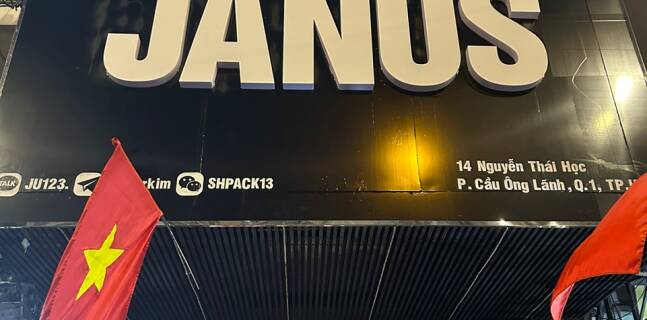20 Excellent Pieces Of Advice For Picking Ho Chi Minh Massage Choices
20 Excellent Pieces Of Advice For Picking Ho Chi Minh Massage Choices
Blog Article
Ten Tips For Different Types Of Vietnamese Massage Services
Here are the top ten suggestions to understand the different kinds of Vietnamese Massage Services, ranging from traditional techniques for massage to lavish experiences at spas. Each kind has its own unique advantages, no matter if you're seeking relaxation or pain relief.
1. Traditional Vietnamese Massage
Technique: Concentrates on Acupressure, deep kneading and stretching. This technique involves applying a strong pressure along the energy lines of the body to ease tension in the muscles.
Expectations: Though it can be intense, the pressure is effective in relieving pain as well as relaxing muscles. Make sure you are prepared for a mix of pressure points as well as gentle twisting and stretches.
2. Hot Stone Massage
Technique: Place heated, smooth stones on specific points of the body. The heat penetrates the muscles, helping to ease tension and stress.
What to Expect: It's an experience of peace and relaxation, perfect for those who appreciate gentle pressure. The warmth of these stones helps to relax without extreme manipulation.
3. Foot Massage (Reflexology)
Technique: Concentrates on stimulating pressure points on your feet, which, according to some theories, correspond to various organs and systems within the body.
What can you expect. The foot massage is usually coupled with lower leg massage and a warm herbal bath. This is an excellent option for people who are constantly on the move.
4. Herbal Compress Treatment
Technique: Warm herbal compresses with local spices, herbs as well as other components are applied directly on the skin. The herbs used are believed to possess therapeutic properties.
What to expect: The warmth of the compresses eases muscles and eases pain. It also reduces inflammation. It also improves circulation. This is a holistic therapy which combines natural remedies and traditional massage.
5. Aromatherapy Massage
Technique: Massage your skin using essential oils selected for their therapeutic properties.
What to Expect: It's a peaceful, calming experience using low to moderate pressure. The most commonly used essential oils used are lavender (for relaxation) and eucalyptus (for breathing relief), and lemongrass.
6. Swedish Massage (Western Influence)
Technique It is a relaxing, soft massage that employs long and circular strokes. It's a style that is popular and inspired by Western techniques.
What to Expect: This is the perfect massage for those who want an enveloping, soothing experience without a lot of pressure. It typically focuses on the entire body with an emphasis on reducing stress and overall health.
7. Shiatsu Massage (Japanese Influence)
Technique: The palm and finger pressure is applied to specific points along the body. This is like needle-free acupuncture.
What to expect: The pressure is firm but not uncomfortable. This is great for those who wish to boost their energy flow and balance. Shiatsu is utilized in a few Vietnamese spas. These are usually the ones that are more expensive.
8. Massage with four hands
Technique Two therapists are working simultaneously to deliver simultaneous strokes. This doubles the relaxation and the intensity of a normal massage.
What to expect: This is a luxurious, unique experience that is offered by a variety of luxury and mid-range spas. Although the intense nature of the treatment can initially be overwhelming, it's highly efficient in creating a state of total relaxation.
9. Thai Massage (Thai-Vietnamese Fusion)
Technique: A blend of deep tissue massage and assisted stretching. It is usually performed on a mat, not on a table, and involves the therapist employing hands, elbows and knees as well as feet to apply pressure.
What you can anticipate: It's an intense physical type of massage that involves many stretching, pressure, and pulling. Certain Vietnamese spas provide a fusion which combines Thai-style techniques and local acupressure.
10. Luxurious Spa Packages
What to Expect - High-end hotels often provide spa packages that combine a variety of massages and other services like facial, scrubs to the body, and baths. These packages are great for people who are looking for a total relaxation experience.
Where to Go: The Reverie Saigon Spa, Aqua Day Spa, and Spa at Park Hyatt Saigon are top choices for a luxury spa day that offers a variety of treatments.
Vietnamese Massage Services: Additional Tips
Be Clear about Your Desires: Before the massage begins, you should communicate any preferences regarding the amount of pressure (light moderate, medium, or strong) or areas to concentrate on, or areas to avoid. Most massage therapists will alter their approach to accommodate your comfort level.
Proper clothing and draping In most spas, you'll receive loose fitting clothes or a bathrobe for traditional Vietnamese massages as well as Thai massages. In higher-end spas towels are utilized for draping to provide your privacy and ease.
Tipping Etiquette Tipping is not mandatory however it is appreciated when you get great services. This is particularly true for massage parlors that are budget-friendly to mid-priced salons. A tip of 10-15% generally gets a good reception.
Conclusion
Vietnamese massage services are available in a variety of styles and types including luxurious relaxation to deep tissue relaxation. Knowing the distinctions between these types of treatments will help you to select the most appropriate treatment for your relaxation and comfort needs. Read the best 호치민 유흥 for more examples.
Vietnamese Street Food Tips For Night Markets, Trendy Restaurants, And International Cuisine
Vietnamese food is known for its vibrant flavors, fresh ingredients, and variety of options. It includes street food at night markets as well as trendy restaurants that incorporate local flavors, to even international cuisine. These top 10 tips will let you enjoy your culinary adventure in Vietnam regardless of whether you dine at trendy restaurants market, at night or even international cuisine.
1. Embrace Street Food Culture
It is recommended to visit the local street stalls, or market nights to sample delicious street food. Must-try dishes include banh mi, pho and bun Cha.
Street food lovers can start by visiting the popular night markets, such as Ben Thanh Market, in Ho Chi Minh City, or Dong Xuan Market, in Hanoi.
2. Street Food Dishes That You Should Try
Understanding the names of popular Vietnamese dishes can assist you in navigating menus and food stalls on the streets. Key dishes to try include:
Banh Xeo (savory Vietnamese Pancakes)
Goi Cuon (fresh spring rolls)
Bun Bo Hue, a spicy beef noodles from Hue
Cao Lau (pork noodle dish from Hoi An)
Che (Vietnamese sweet dessert soup)
3. The Night Market is a great opportunity to discover affordable and authentic experiences
Night markets provide a lively environment with a variety of food souvenirs, local products. They are great for sampling inexpensive street food and getting an understanding of the local scene.
Popular markets such as Hanoi's Weekend Night Market, Da Nang's Helio Night Market, and Hoi An Night Market are well-known for their local food and street food stalls.
4. There is a lot to learn from watching what locals eat.
Pick a street food vendor based on the recommendations of locals. A stall with an extended line or crowd of locals typically indicates quality fresh, freshly prepared food.
Check out how food is prepared to see if they're freshly cooked, and don't be afraid to ask for suggestions from fellow travelers.
5. Learn the basics of Vietnamese Phrases and Enjoy A Better Experience
It's not required to speak Vietnamese fluently to take advantage of street markets or eateries with a smaller menu. Phrases like "Bao nhieu tien?" (How much?) Food ordering is much easier by using phrases like "Choi mot ..." or "Choi mot ...)".
The sellers might not speak fluently in English however, they're generally friendly and will help you with the menu.
6. Vietnamese cuisine gets a modern twist at trendy restaurants
Vietnam has a growing amount of fashionable eateries in cities serving modern interpretations of traditional meals. Restaurants that incorporate the latest techniques of fusion or top-quality ingredients to give traditional dishes a contemporary twist.
The Deck Saigon, Secret Garden Ho Chi Minh City, and Home Hanoi are all well-known for their stylish Vietnamese restaurants that serve innovative cuisines.
7. Sample International Cuisine with a Vietnamese Twist
Vietnam's food scene is a mix of international cuisine and local tastes. You'll also find Japanese eateries, French restaurants, Korean and Italian restaurants that utilize Vietnamese herbs as well as spices and techniques.
Don't forget to try the Vietnamese-inspired pizza, fusion sushi, or French-inspired bakeries with local ingredients like lemongrass or chili.
8. Make sure you are aware of hygiene and Freshness
Although street food generally is healthy to eat, you should stick to vendors that prepare meals fresh and right directly in front of you. Avoid stalls whose food has been on the market for long periods of time, particularly during hot weather.
High-end and trendy restaurants generally have better hygiene standards however it's recommended to look up reviews online if you're concerned about food safety.
9. Local ingredients are available and cook classes
Learn more about the components of Vietnamese food by stepping into local markets like Ben Thanh Market, Dong Ba Market or Hanoi's Long Bien Market. There are fresh meat, vegetables, spices and fruits in these markets.
Many trendy restaurants and hotels offer cooking classes where you can learn how to cook Vietnamese dishes using local ingredients. This is an excellent way to bring some of the flavor back home.
10. It is also possible to enjoy local drinks during your meal.
The culinary experience can be enhanced by pairing your meals with local drinks. Vietnamese iced espresso (Caphe sua Da), sugarcane juicing, and local beers like Bia Saigon beer or Hanoi Beer have become popular.
In trendy bars, you might see cocktails made from local ingredients such as lychee lemongrass, or passionfruit. The exploration of these drinks is a fantastic way to cool off and enjoy the night.
Vietnamese Cuisine: Bonus Tips
Request sauces and herbs: Vietnamese food is often served with sauces and herbs like nuoc cham (a base of fish sauce that is used as a sauce for dipping), or chili paste. It is possible to request an extra sauce if the flavors are not to your liking.
Don't skip street food desserts: Vietnam has a wide range of sweet treats worth looking into including sticky rice desserts to Banh Flan (Vietnamese flan) and local ice creams. The night markets are a great location to locate these delicious snacks.
The conclusion of the article is:
The Vietnamese food scene is varied, with everything from authentic street food to fashionable and international dining experiences. These tips will assist you to navigate Vietnamese markets at night and discover the local food scene. You'll also be able to experience the distinct tastes of Vietnamese cuisine. Vietnam's cuisine is something for everyone. No matter if you're an avid foodie or are looking for a delicious meal, the culinary scene in Vietnam is sure to please. Read the top 호치민 유흥 for more recommendations.